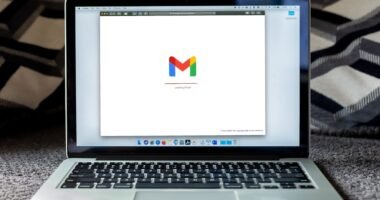LinkedIn is a powerful professional networking platform that connects millions of professionals and businesses worldwide. With over 700 million users, it has become a valuable source of data for businesses, recruiters, marketers, and researchers. LinkedIn data scraping is the process of extracting valuable information from LinkedIn profiles, groups, and company pages using automated tools and techniques. This data can include user profiles, job postings, company information, and more.
LinkedIn data scraping has become increasingly popular due to the valuable insights it can provide for businesses and professionals. By extracting data from LinkedIn, businesses can gain valuable market intelligence, identify potential leads, and analyze competitor activity. Recruiters can use LinkedIn data scraping to find potential candidates for job openings, while marketers can use it to identify potential clients and partners. Researchers can also use LinkedIn data scraping to gather data for academic studies and market research.
Key Takeaways
- LinkedIn data scraping involves extracting information from LinkedIn profiles and pages using automated tools or techniques.
- The benefits of LinkedIn data scraping include lead generation, market research, competitor analysis, and talent acquisition.
- Legal and ethical considerations for LinkedIn data scraping include respecting user privacy, complying with LinkedIn’s terms of service, and avoiding spamming or misuse of data.
- Tools and techniques for LinkedIn data scraping include web scraping tools, data extraction software, and programming languages like Python for custom scraping scripts.
- Analyzing and utilizing LinkedIn data involves organizing and interpreting the scraped data for business insights, networking, and targeted marketing efforts.
- Case studies of successful LinkedIn data scraping can showcase how companies have used scraped data to improve their sales, recruitment, and marketing strategies.
- In conclusion, the future trends in LinkedIn data scraping may involve more advanced scraping technologies, stricter regulations, and increased focus on data security and privacy.
Benefits of LinkedIn Data Scraping
LinkedIn data scraping offers a wide range of benefits for businesses, recruiters, marketers, and researchers. One of the key benefits is the ability to gather valuable market intelligence and insights. By scraping data from LinkedIn profiles and company pages, businesses can gain a better understanding of their target audience, industry trends, and competitor activity. This information can be used to make informed business decisions, develop targeted marketing campaigns, and identify new business opportunities.
Recruiters can also benefit from LinkedIn data scraping by using it to find potential candidates for job openings. By extracting data from LinkedIn profiles, recruiters can identify individuals with the right skills and experience for specific roles, saving time and resources in the recruitment process. Marketers can use LinkedIn data scraping to identify potential clients and partners by analyzing user profiles and company pages for relevant information. This can help marketers to develop targeted outreach campaigns and build valuable business relationships.
Researchers can also benefit from LinkedIn data scraping by using it to gather data for academic studies and market research. By extracting data from LinkedIn profiles and groups, researchers can gather valuable insights into professional networks, industry trends, and user behavior. This information can be used to support academic research, inform business strategies, and contribute to the development of new knowledge in various fields.
Legal and Ethical Considerations
While LinkedIn data scraping offers many benefits, it is important to consider the legal and ethical implications of this practice. LinkedIn’s terms of use explicitly prohibit the use of automated tools to scrape data from its platform without permission. This means that scraping data from LinkedIn without authorization could potentially violate the platform’s terms of service and lead to legal consequences.
In addition to legal considerations, there are also ethical implications to consider when scraping data from LinkedIn. Users may not be aware that their data is being scraped, which raises concerns about privacy and consent. It is important for businesses and researchers to consider the ethical implications of data scraping and ensure that they are acting in a responsible and transparent manner.
To mitigate legal and ethical risks, businesses and researchers should seek permission from LinkedIn or its users before scraping any data from the platform. This can be done by obtaining explicit consent from users or by working with LinkedIn’s API to access data in a compliant manner. By taking these steps, businesses and researchers can ensure that they are acting in accordance with legal and ethical standards while still benefiting from the valuable insights that LinkedIn data scraping can provide.
Tools and Techniques for LinkedIn Data Scraping
| Tool/Technique | Description |
|---|---|
| LinkedIn Scraper | A tool that can extract data from LinkedIn profiles, such as name, job title, company, and contact information. |
| Python BeautifulSoup | A Python library for pulling data out of HTML and XML files, which can be used for web scraping LinkedIn profiles. |
| LinkedIn API | An interface provided by LinkedIn for developers to access and retrieve LinkedIn data, such as profiles, connections, and companies. |
| Proxy Servers | Techniques to use proxy servers to avoid getting blocked while scraping LinkedIn data, by rotating IP addresses and mimicking human behavior. |
There are several tools and techniques available for LinkedIn data scraping, each with its own advantages and limitations. One common technique is web scraping, which involves using automated bots to extract data from LinkedIn profiles and company pages. Web scraping tools like Octoparse, ParseHub, and WebHarvy allow users to create custom web scraping scripts to extract specific data points from LinkedIn.
Another technique for LinkedIn data scraping is using APIs (Application Programming Interfaces) provided by LinkedIn. The LinkedIn API allows developers to access certain types of data from the platform in a compliant manner. By using the API, businesses and researchers can access user profiles, company information, job postings, and more without violating LinkedIn’s terms of use.
In addition to web scraping and APIs, there are also specialized LinkedIn data scraping tools available that are specifically designed for extracting data from the platform. These tools often provide advanced features for extracting and analyzing LinkedIn data, making them a valuable resource for businesses and researchers looking to gather insights from the platform.
Analyzing and Utilizing LinkedIn Data
Once data has been scraped from LinkedIn, it can be analyzed and utilized in a variety of ways to benefit businesses, recruiters, marketers, and researchers. Data analysis techniques such as data mining, machine learning, and natural language processing can be used to extract valuable insights from LinkedIn data. This can include identifying trends, patterns, and correlations within the data that can inform business strategies and decision-making.
For businesses, scraped LinkedIn data can be utilized to identify potential leads, analyze competitor activity, and gain market intelligence. By analyzing user profiles and company pages, businesses can identify individuals or organizations that may be interested in their products or services. This information can be used to develop targeted marketing campaigns and build valuable business relationships.
Recruiters can utilize scraped LinkedIn data to identify potential candidates for job openings by analyzing user profiles for relevant skills and experience. This can help recruiters to streamline the recruitment process and find the right candidates more efficiently. Marketers can also utilize scraped LinkedIn data to identify potential clients and partners by analyzing user profiles and company pages for relevant information.
Researchers can utilize scraped LinkedIn data to gather insights into professional networks, industry trends, and user behavior. This information can be used to support academic research, inform business strategies, and contribute to the development of new knowledge in various fields.
Case Studies of Successful LinkedIn Data Scraping

There are numerous case studies that demonstrate the successful use of LinkedIn data scraping for various purposes. For example, a marketing agency used LinkedIn data scraping to identify potential clients for a new product launch. By analyzing user profiles and company pages on LinkedIn, the agency was able to identify individuals and organizations that fit their target audience criteria. This allowed them to develop targeted outreach campaigns that resulted in a high conversion rate and successful product launch.
In another case study, a recruiting firm used LinkedIn data scraping to streamline their candidate sourcing process. By extracting data from LinkedIn profiles, the firm was able to identify potential candidates with the right skills and experience for specific job openings. This allowed them to quickly build a pool of qualified candidates and fill positions more efficiently than traditional recruiting methods.
Researchers have also used LinkedIn data scraping for academic studies and market research. For example, a team of researchers used scraped LinkedIn data to analyze professional networks within a specific industry. By gathering insights from user profiles and groups on LinkedIn, the researchers were able to identify key influencers and connections within the industry, leading to valuable insights for their study.
These case studies demonstrate the diverse range of applications for LinkedIn data scraping across different industries and purposes. From marketing and recruiting to academic research, LinkedIn data scraping has proven to be a valuable tool for gathering insights and making informed decisions.
Conclusion and Future Trends in LinkedIn Data Scraping
In conclusion, LinkedIn data scraping offers a wide range of benefits for businesses, recruiters, marketers, and researchers. By extracting valuable information from LinkedIn profiles, groups, and company pages, businesses can gain valuable market intelligence, identify potential leads, analyze competitor activity, and more. Recruiters can use LinkedIn data scraping to find potential candidates for job openings, while marketers can use it to identify potential clients and partners. Researchers can also use LinkedIn data scraping to gather data for academic studies and market research.
As the use of LinkedIn data scraping continues to grow, it is important for businesses and researchers to consider the legal and ethical implications of this practice. Seeking permission from LinkedIn or its users before scraping any data from the platform is essential to ensure compliance with legal and ethical standards.
Looking ahead, future trends in LinkedIn data scraping may include advancements in web scraping tools and techniques, as well as increased use of APIs provided by LinkedIn. Additionally, as technology continues to evolve, we may see new applications for scraped LinkedIn data in areas such as artificial intelligence, predictive analytics, and personalized marketing.
Overall, LinkedIn data scraping has proven to be a valuable tool for gathering insights from the platform that can inform business strategies, recruitment processes, marketing campaigns, academic research, and more. By considering legal and ethical considerations while utilizing the right tools and techniques for scraping data from LinkedIn, businesses and researchers can continue to benefit from the valuable insights that this practice provides.
Looking for more information on data scraping and its implications? Check out this insightful article on influencers.email that delves into the ethical considerations and potential consequences of LinkedIn data scraping. Learn more here about the impact of data scraping on user privacy and the legal ramifications associated with this controversial practice.
FAQs
What is LinkedIn data scraping?
LinkedIn data scraping is the process of extracting information from LinkedIn profiles and pages using automated tools or software. This can include gathering data such as names, job titles, companies, and contact information.
Is LinkedIn data scraping legal?
LinkedIn’s terms of service prohibit scraping or crawling of their website without permission. Therefore, scraping LinkedIn data without their consent is a violation of their terms and may be illegal.
What are the risks of LinkedIn data scraping?
The risks of LinkedIn data scraping include potential legal action from LinkedIn, damage to your reputation, and the possibility of violating privacy laws. Additionally, scraping data from LinkedIn may result in the loss of access to the platform.
How can I scrape LinkedIn data legally?
To scrape LinkedIn data legally, you should obtain permission from LinkedIn or use their official API (Application Programming Interface) to access and gather data from their platform. It’s important to comply with their terms of service and any applicable laws regarding data privacy and web scraping.
What are the alternatives to scraping LinkedIn data?
Instead of scraping LinkedIn data, you can use LinkedIn’s official API to access and retrieve data from their platform. This allows you to gather information in a way that is compliant with their terms of service and legal requirements. Additionally, you can manually collect data from public profiles by using the information provided with the user’s consent.






